Key Takeaways
- Flexbooks are "a free and open-source textbook platform" that allows users to "build and edit collaborative textbooks."
- Responses to and use of the Kansas State University Human Nutrition (HN 400) Flexbook (Mozilla Firefox or Google Chrome are suggested browsers) differed significantly between campus and online students, in that the former were more comfortable with traditional teaching modalities.
- Students in the Kansas State University Human Nutrition (HN 400) course primarily used electronic flexbook formats, with the majority using multiple electronic formats.
- Most students appreciated the affordability, flexibility, and features of the flexbook over a traditional textbook.
Since the nonprofit CK–12 Foundation in 2007 pioneered the idea of a flexbook as "a free and open-source textbook platform where one can build and edit collaborative textbooks," the availability and use of flexbooks has become more mainstream.
There is no doubt that as an educational resource, flexbooks are highly versatile and flexible, but increasingly they have also been embraced as part of a strategy to help reduce some of the escalating costs associated with higher education. These costs are not insignificant: an average student spends $1,137 per year on textbooks and other course materials. The price of textbooks has increased 22 percent over the past four years, and in a recent survey 70 percent of students reported not buying a textbook due to price, despite 78 percent believing they would do worse in the course without the textbook(s).1
While individual faculty members or instructors have little control over tuition and fees, they can exert some control over what materials are used in their courses. They can choose to use more affordable options, for example, like open textbooks or no textbooks at all. For this reason, author Brian Lindshield — a former student who felt exploited by exorbitant textbook prices — vowed to teach his Human Nutrition course (HN 400) at Kansas State University without a textbook.
HN 400 is an intermediate level, three-credit-hour nutrition course that is a prerequisite for a number of higher-level nutrition courses. Author Brian Lindshield has taught the course on campus for three years and online for two years. As a campus course, it is offered each spring. Of the 90 to 110 students enrolled in the campus course, most are nutrition majors in their sophomore or junior year. The online course is offered in the fall, spring, and summer, with 14 to 51 students enrolled each semester. Approximately half the students in the online course are in the distance dietetics bachelor's degree program and already have other degrees.
Online students in the course can generally be characterized as "nontraditional" students, while campus students are "traditional" — students who began pursuit of a higher education degree immediately after high school.
Evolution of the Flexbook
Seeking to facilitate a more active learning experience, in spring 2009 Lindshield taught HN 400 on campus for the first time without a textbook or reading material. A Wetpaint Wiki was used instead, allowing students to collaborate on the material presented in class. Points were included in the structure of the course for student wiki contributions; the instructor was responsible for reviewing the wiki content. The students' final assignment was a reflection paper about their experiences of the course, and they were encouraged to provide honest feedback. Notably, many students indicated dissatisfaction with the wiki interface and stated that they would have preferred something written — not "constantly changing" — to accompany the course. Even though the instructor was reviewing the pages daily, some students did not know when they were last reviewed by the instructor, causing them to question whether the information was correct and current. The instructor, for his part, found reviewing the pages a challenge because of the students' tendency to leave them to the last minute. Moreover, it also became evident that students completed the wiki pages primarily to get the course wiki points and to get the instructor's feedback on the wiki exam review pages.
Armed with this knowledge, the instructor set out to make atextbook substitute for the next year, aided by a student who had completed the course, Russ Wolters. The limitations of the wiki, such as difficulty in printing and its "techy" interface, led him to search for alternatives that had wiki functionality without its limitations. Wolters suggested Google Docs. The flexibility to download documents in a variety of file formats, ability to publish to the web or print, wiki-like editing/collaboration options, and internal search engine convinced the instructor that Google Docs could support making what he envisioned,2 despite the small learning curve for Microsoft Office Word users and the lack of features such as a grammar checker and Greek characters. The name flexbook was adopted because the CK–12 Foundation's definition of a flexbook most closely fit the planned resource, and the flex part of the name represented the flexibility of the resource.
The HN 400 flexbook was first used in the spring 2010 semester. Students were required to create a k-state.edu Google Docs account or provide a Gmail address so that the instructor could share the documents to their account before he covered it in class. The flexbook received a more positive response than had the wiki the year before — about 50 percent positive.
At the start of the third year, the instructor organized the flexbook into collections, which are essentially folders, and compiled a table of contents. The online course for the fall 2010 semester was updated to include the class videos recorded during the spring 2010 campus course, the flexbook, assignments, and exams similar to those used in the campus course. The HN 400 flexbook was also published online, with a link placed in the course management system (K-State Online). A PDF of the flexbook was also made and posted on the course management system.
In the same way, a PDF of the flexbook was remade to incorporate changes from the fall 2010 semester before the online and campus spring 2011 courses began. Not only was this PDF and a link to the flexbook included in the course management system for both courses, but hard copies of the PDF were available for purchase from a local copy center. With multiple formats available, students were not required to use the flexbook in a K-State Google Docs or Gmail account, as a flexbook tutorial video explained. A traditional, alternative course textbook was listed as optional for those students who wanted a reference beyond the flexbook.
Video 1. Evolution of the HN400 Flexbook
Organization of the Flexbook
The flexbook's chapters, sections, and subsections are essentially folders with documents arranged numerically to facilitate finding material. This helps organize the material and helps prevent long scrolling pages when read electronically. For students who prefer fewer documents, a folder is available that contains chapters that are updated periodically, but not as frequently as the individual documents.
Video 2. Organization of the Flexbook
Because the flexbook was designed to be read online, it contains more figures, videos, animations, and other web links (found in "Web Links" boxes) than a traditional textbook. (See, for example, the Electron Transport Chain subsection.) The online format meant that great care was taken in using only non-copyrighted figures or those created by the instructor.
Video 3. Features of the Flexbook
By the spring 2011 semester, all online and campus HN 400 students were given the option to use the flexbook. In order to determine student perceptions and use in a more quantitative manner than can be determined from end-of-term reflection papers, we created a survey that would also allow us to compare the responses of campus and online students.
Results
See the sidebar "Methods and Data Analysis" for an explanation of the methods used in our study and analysis of the data.
Demographics
Of the 51 online and 110 campus students, 31 (60 percent) online and 40 (36.3 percent) campus students completed the survey. The online students who completed the survey were all female, older, and mostly nontraditional dietetics students, many with degrees or previous college experience. By contrast, the campus students were mostly younger, female, traditional students with more diverse majors/areas of study. Table 1 shows the demographics of the students who completed the survey.
Table 1. Demographics of Students Completing Surveys
|
| Online <(n = 31) | Campus (n = 40) |
| Age | ||
| 18–25 years | 10 | 38 |
| 26–35 years | 12 | 2 |
| 36–45 years | 5 | 0 |
| 46–55 years | 4 | 0 |
| Gender | ||
| Female | 31 | 28 |
| Male | 0 | 12 |
| Traditional student | ||
| Yes | 8 | 38 |
| No | 23 | 2 |
| Classification* | ||
| Freshman | 0 | 1 |
| Sophomore | 0 | 8 |
| Junior | 3 | 23 |
| Senior | 4 | 4 |
| Senior plus | 1 | 2 |
| Highest level of education** | ||
| Some undergraduate education | 6 | 0 |
| Associate's degree | 6 | 2 |
| Bachelor's degree | 8 | 0 |
| Some graduate education | 1 | 0 |
| Graduate degree | 2 | 0 |
| Primary major/area of emphasis/study | ||
| Dietetics | 23 | 16 |
| Public Health Nutrition | 2 | 8 |
| Athletic Training | 2 | 7 |
| Nutrition and Kinesiology | 0 | 6 |
| Biology | 1 | 4 |
| Nutritional Sciences | 2 | 2 |
| Microbiology | 0 | 3 |
| Kinesiology | 1 | 1 |
| Food Science | 2 | 0 |
| Life Sciences | 0 | 2 |
| Gerontology | 0 | 1 |
| Chemistry | 1 | 0 |
| Nursing | 1 | 0 |
** Nontraditional students–only question
Flexbook Use and Perceptions
Self-rated technology savviness did not differ significantly between campus and online students, but online students did report using the flexbook significantly more often than campus students. Figure 1 shows a comparison of campus (n = 39–40) and online (n = 31) students' flexbook perceptions using seven-point Likert scales (means + standard error of the mean). The campus student who answered "never" for the textbook frequency question did not answer the flexbook questions. Figure 2 illustrates the most selected frequency of use responses for campus and online students: every two weeks and more than three times a week, respectively.
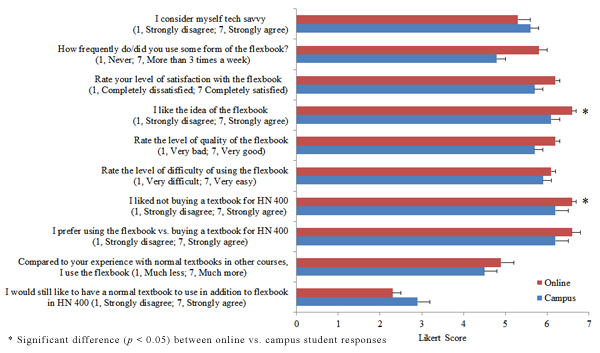
Figure 1. Flexbook Use and Perceptions
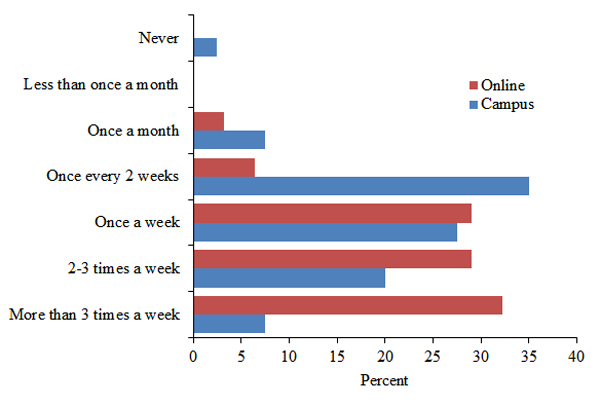
Figure 2. Frequency of Flexbook Use
The level of satisfaction, level of quality, and ease of use of the flexbook were highly rated by both groups, with no significant difference between campus and online students (Figure 1). Both groups indicated they liked the flexbook and not having to buy a textbook for the course, but online students rated these parameters significantly higher than did campus students. Both groups were equally disinterested in using a traditional textbook alongside the flexbook. All the students also claimed to use the flexbook somewhat more often than they used a regular textbook in other courses.
Flexbook Usage and Preferences
There was no significant difference in the use of the flexbook's text and figures by online and campus students (Figure 3). However, significantly more online students accessed the flexbook's animations, videos, and links.
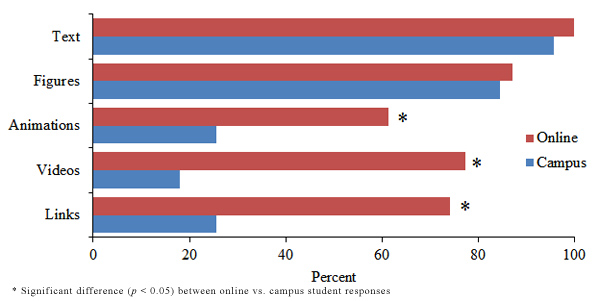
Figure 3. Flexbook Features Used
Among the features and attributes of the flexbook, online students liked the text significantly more than did their campus contemporaries (Figure 4). Also, significantly more online students liked the animations, videos, links, and the flexbook's web accessibility than did campus students.
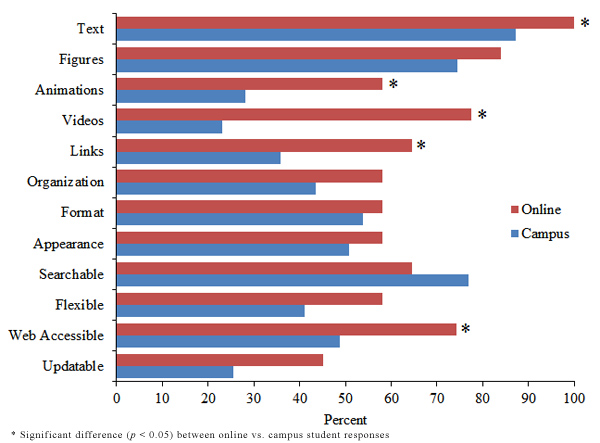
Figure 4. Preference for Flexbook Features and Attributes
There was no statistical difference between either group's preference for the flexbook's figures, format, appearance, and search engine feature, but a majority of online students and a minority of campus students liked the flexbook's organization and flexibility. Finally, while a minority of students in both courses appreciated that the flexbook was updatable, online students favored this feature more than campus students.
Flexbook Formats Used
The majority of campus and online students reported using electronic versions of the flexbook rather than the printed format. Although electronic PDFs were the most and hardcopy the least commonly reported primary formats for both online and campus students, campus students were more favorably disposed to the Google Docs version than online students. Figure 5 shows flexbook format preferences of online (n = 31) and campus (n = 39) students on the left and right, respectively.
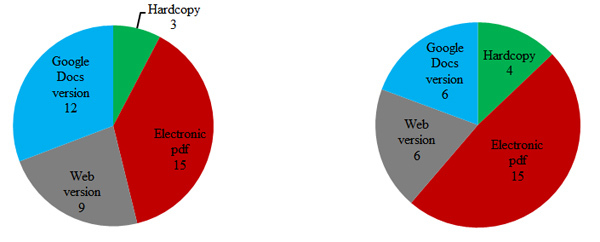
Figure 5. Primary Flexbook Format Usage
A majority of students reported using a secondary format of the flexbook in addition to the primary format. The Google Docs and web formats were the most commonly used second formats by online (left; n = 31) and campus (right; n = 39) students, respectively, in Figure 6. Hardcopy was the least commonly used secondary format for both groups.
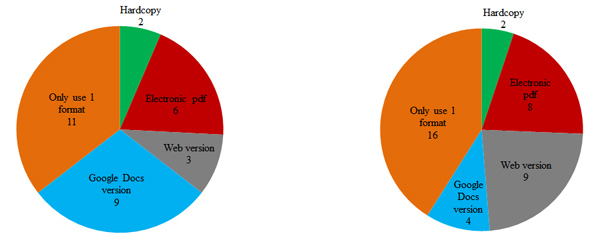
Figure 6. Secondary Flexbook Format Usage
For students who used only one flexbook format, we were interested in determining if there were differences in the format used compared to multiple format users. We aggregated responses from online and campus students to see how overall primary format use rates in students who used multiple formats compared to those who used only one format. There were no notable differences between primary format in multiple-format users and one-format users; there was a slight preference for the Google Docs version by one-format students. These results suggest that no one format that students chose to use prevented them from using a secondary format. Figure 7 shows the primary format from multiple-format-using (left; n = 70) and one-format (right; n = 26) students.
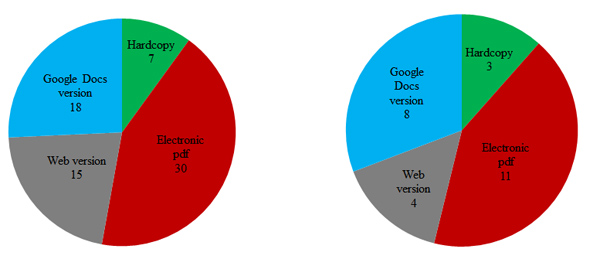
Figure 7. Primary Format from Multiple-Format-Using Students and One-Format-Using Students.
Reasons for Choosing a Particular Format
Notable reasons students gave for choosing one particular format over another include:
- Students who indicated a preference for the PDF format cited being able to use the flexbook offline or limited Internet access as reasons. They reported convenience in being able to use a PDF version with NOOK Study or on an eReader, iPad, or smart-phone; some indicated a preference for the PDF interface alone.
- Those who indicated a preference for the hardcopy format wanted accessibility beyond the computer or preferred not reading on the computer. Some online students indicated that their jobs involved working on a computer, thus, they wanted a different modality for the class.
Student Comments
Comments from the last two questions of the survey {link "last two questions of the survey" to Lindshield sidebar.docx} as well as from students' reflection papers provided valuable insights about the flexbook:
- Many students clearly liked/appreciated not having to buy a textbook for the course.
- They appreciated the concise format of the flexbook, as well as the absence of extraneous language/material often found in textbooks.
- A few students found the flexbook too brief or the content too close to what was presented in class and wanted a different perspective. Some campus students thought it made coming to class boring because the material in the flexbook too closely resembled that taught in class.
- Many students liked the search function in the electronic versions, while a smaller number indicated problems finding what they wanted.
- Many did not appreciate the textbook being listed as optional; indeed, those who obtained it reported little to no use of it.
- Some students indicated that they did not like the flexbook's segmentation, its navigation, and/or its interface; we assume they were referring to the Google Docs or web-accessed versions. Likewise, some complained about scrolling; we assume they were referring to the PDF version.
- A small number of students complained about grammatical and spelling errors in the flexbook, and some expressed frustration that the links did not "link out" and caused complications with their browsers. (We assumed this linking problem occurred when the PDF version was opened in the browser, because we have not been able to replicate the problem. We recommend using Mozilla Firefox or Google Chrome for accessing the flexbook.)
Discussion
Research suggests that student performance is not affected by using e-textbooks instead of textbooks3; however, recent student surveys4 and most previous publications5 have found that students prefer printed textbooks. A few studies in small class settings have found that students preferred e-textbooks to regular textbooks,6 and a few others have reported mixed results.7
Given the research and HN 400 student comments, we expected many students to use a hardcopy of the flexbook that they either printed themselves or purchased from a local copy center, but both campus and online students overwhelmingly chose to use the electronic formats. We were also surprised to find that no single format was preferred; in fact, most students chose to use more than one electronic format. It was enlightening to discover the range of devices/methods (such as e-readers and smartphones) used to access the flexbook because the students were not instructed how to do so. The appreciable number of students who reported accessing the flexbook through its link was also somewhat unexpected. What did become apparent was that the students appreciated being able to choose one or several of the electronic formats available.
Online Traditional versus Campus Nontraditional Students
The structure of the course allowed us to disaggregate usage patterns and perceptions for campus (traditional) and online (nontraditional) students. That online students reported using the flexbook more often concurs with a previous study of business statistic students in which online students more frequently referred to written lessons than campus students.8 This is further supported by the finding that nontraditional students — the preponderance of students taking the online course — spend more time preparing/studying for class.9 Online students have also indicated a preference to learn from web-based course materials..10
This agreed with our observations:
- Some online HN 400 students prefer reading the flexbook to watching class videos. Such an attitude might explain why online students rated the flexbook more highly than campus students and made greater use of its animations, videos, and links.
- Many of the animations, videos, and links were used during the class on campus, which might explain why fewer campus students reported using these features in the flexbook. Nonetheless, we were surprised that campus students liked animations, videos, and links less than online students because these were included with the interests of theyounger campus students in mind.
- We also had reasoned that online students — who might have a greater appreciation for the cost of education — would more strongly like not buying a textbook. Also, given how they're taking the course, it was not surprising that they liked the flexbook's web accessibility.
Flexbook on the Internet
The HN 400 flexbook has been available online for a year already. Indeed, it is one of the top search engine results for "HN 400" or "Human Nutrition Flexbook." (The terms "flexbook" or "Human Nutrition" are not specific enough to elicit this result.) It is also available through the open textbook/educational resource sites Textbook Revolution, Multimedia Educational Resource for Learning & Online Teaching (MERLOT), and Open Education Resources (OER) Commons.
Using Google Analytics to measure the times the web version was accessed through the first year (through August 30, 2011) indicated that since its online publication, the flexbook has had 897 visits and 6,144 page views, with 90.6 percent direct traffic, 7.6 percent from search engines, and 1.8 percent from referring sites. This suggests that students in the course, who have the direct link, are generally the only people to access the online flexbook.
Note on the Survey Completion Rate
One limitation of the study was the low survey completion rate, particularly among campus students. However, other e-textbook surveys administered online reported response rates from 34.2 to 85 percent.11 Each course's response rate and the 44.1 percent combined response rate for both courses falls within this range. Nevertheless, we cannot rule out the possibility that students who completed the survey liked the HN 400 flexbook more, used it more, and more commonly used electronic formats than students who did not complete the survey.
Conclusions
Our results suggest that students' preferences for e-textbook formats vary. These differences in preference may partially explain resistance to current e-textbooks, which are often offered in only one format or purchased in a single format. In addition, the results further suggest that if multiple formats are available, most students will use more than one format.
Google Docs and other cloud-based programs raise the possibility of creating more and better open educational resources. These can also be updated with new or additional information without revising the entire resource.
Instructors of similar courses and/or professional societies can collaborate to produce such materials — they are time-intensive for individuals to develop. Some of the funds currently used to purchase textbooks could be rerouted into professional societies and/or institutions to support the development of open educational resources, while still decreasing student expenses currently used to purchase textbooks.
The flexbook remains a "living" resource. It is available (along with accompanying PowerPoint slides) for instructors of similar subjects to customize to fit the needs of their respective courses. Sharing of material among instructors offers exciting possibilities for improving the quality of student learning, but instructors must be willing to make their material available to be used, adapted, and customized by others. This means using Creative Commons licensing instead of copyrighting material.
Based on the HN 400 flexbook's struggle to get noticed online, a plan is needed to help instructors find and disseminate open educational resources like the flexbook. The websites of professional organizations or one well-known, actively promoted, open educational resources website would be ideal places for this purpose.
We hope that the development, adoption, and use of open educational resources like the flexbook continue to grow. Feel free to contact author Brian Lindshield ([email protected]) if his knowledge or experience can help your efforts in this endeavor.
Acknowledgments
The authors wish to acknowledge Russ Wolters for his contributions to the development and refinement of the HN 400 flexbook and to Shalin Hai-Jew for her comments on the manuscript and assistance in making the videos. This is contribution number 12-059-J from the Kansas Agricultural Experiment Station.
Methods and Data Analysis
Survey Administration
Late in the spring 2011 semester, rosters from the campus (69 females and 41 males) and online (50 females and one male) courses were imported into Kansas State University's Axio Survey. Each student was sent an e-mail with a unique link to complete the survey anonymously during the 2.5 weeks the survey was available. The instructor also personally invited and reminded campus students to complete the survey and posted reminders for both courses on the course management system.
The survey and research procedures were approved by the Kansas State University Institutional Review Board.
Survey
Branching logic was used to develop those survey questions requesting demographic information (Questions 1 to 9) and a frequency of use question (Question 10). If students answered that they never used the flexbook (Question 10); they were taken to the following final two open-ended questions:
- "Why did you choose the way(s) that you used, or did not use, the flexbook?"
- "If you have additional comments about the flexbook, please provide them below."
If students indicated they used the flexbook, they were taken to Questions 11 to 18, which asked about their use and perceptions of the flexbook using seven-point Likert scales.
Questions 19 and 20 asked them to select the features of the flexbook they used and liked, respectively. Questions 21 and 22 asked them to choose the flexbook format they primarily and, if applicable, secondarily used. They were then directed to the final two, open-ended questions noted above. Answering all non-open-ended questions was required to submit the survey.
Data Analyses
Wherever applicable, percentages and descriptive statistics (means ± standard error of the mean) were calculated. Wilcoxon-Mann-Whitney tests were performed to determine differences between the campus and online students about perceptions, usage and preference attributes associated with the flexbook (Figures 1–4 in the main article), with p < 0.05 considered significant. The Wilcoxon-Mann-Whitney test is a nonparametric statistical method for comparing two independently sampled populations.1
The perception-related questions (Figure 1) were asked using seven-point Likert scales. To check the internal consistency and reliability of each question/construct, Cronbach's a was calculated to show the robustness and unidimensionality of each construct if repeatedly re-administered.2
Factor analysis with promax rotation was also conducted on the perception questions to identify the relative importance of the constructs. This analytical tool relies on a reduction procedure where two to three factors/dimensions explain the major variability in a data set; that is, the most important response variables will contribute to the first dimension and less important variables will be relegated to higher dimensions (second or higher). Rotation — rotation promax, in our case — of the factor pattern obtained is conducted to facilitate the interpretation.3
Internal Reliability and Factor Analysis of Likert Data
Cronbach's α for the Likert-scale questions ranged from 0.51 to 0.79 (see the table). Generally, Cronbach's a coefficient of reliability has a range of 0.7 to 0.9; for smaller instruments of 10 to 15 items, a score of > 0.5 is considered reliable.4
Cronbach's α and Factor Analysis Results of HN 400 Flexbook Data
| Question | Cronbach's α | Factor Analysis | |
| Dimension 1 | Dimension 2 | ||
| Dimension 1: Perception and Idea | |||
| Rate your level of satisfaction with the flexbook: 1 = completely dissatisfied; 7 = completely satisfied | 0.51 | 0.57 | 0.15 |
| I like the idea of the flexbook: 1 = strongly disagree; 7 = strongly agree | 0.53 | 0.74 | 0.11 |
| Rate the level of quality of the flexbook: 1 = very poor; 7 = very good | 0.53 | 0.61 | 0.18 |
| I liked not buying textbook for HN 400: 1 = strongly disagree; 7 = strongly agree | 0.54 | 0.80 | -0.09 |
| I prefer using the flexbook vs. buying a textbook for HN 400: 1 = strongly disagree; 7 = strongly agree | 0.51 | 0.93 | -0.06 |
| I would still like to have a normal textbook to use in addition to flexbook in HN 400: 1 = strongly disagree; 7 = strongly agree | 0.79 | -0.76 | 0.41 |
| Dimension 2: Usability | |||
| I consider myself tech savvy: 1 = strongly disagree; 7 = strongly agree | 0.65 | -0.33 | 0.41 |
| How frequently do/did you use some form of the flexbook? 1 = never; 7 = more than three times a week | 0.58 | 0.03 | 0.47 |
| Rate the level of difficulty of using the flexbook: 1 = very difficult; 7 = very easy | 0.56 | 0.09 | 0.59 |
| Compared with your experience with normal textbooks in other courses, I use the flexbook: 1 = much less; 7 = much more | 0.53 | 0.33 | 0.49 |
Factor analysis extracted two latent variables (Dimension 1 and 2). Dimension 1 grouped the questions that were related to the "perception and idea" of the flexbook among the respondents, while Dimension 2 was related to "usability" aspects. Values of > 0.4 (bolded in the table) are believed to impact the results.5 The factor score for Dimension 1 was highest when preferring the flexbook over a normal textbook indicated that the students agreed that the former was the better option. That this result might have something to do with the high cost of textbooks is supported by the high scores earned for "I liked not buying textbook for HN 400" and "I like the idea of the flexbook". Overall, Dimension 1 showed that the respondents were very positive about the idea of using a flexbook instead of a traditional textbook. Klara Nelson and Harold Webb observed similar findings on acceptance and usage of e-books by students.6 Scoring for the question whether students wanted to use a normal textbook in addition to a flexbook was opposite to that for the other five questions; thus, a negative score indicated most students did not want a normal textbook as well as the flexbook.
Dimension 2 described usability considerations, including the technological comfort levels of the respondents. Although this question elicited some of the lowest scores, the students clearly found the flexbook to be user-friendly and the overall experience of using it positive.
- Maura Ellen Stokes, Charles Shaw Davis, and Gary Grove Koch, Categorical Data Analysis using the SAS System (Cary, NC: SAS Institute Inc., 2000), pp. 159–180.
- Larry Hatcher, A Step-by-Step Approach to using the SAS System for Factor Analysis and Structural Equation Modeling (Cary, NC: SAS Institute Inc., 1994), pp. 57–128; and Jerard Kehoe, "Basic Item Analysis for Multiple-Choice Tests," Practical Assessment, Research & Evaluation 4, no. 10 (1995).
- Hatcher, Step-by-Step Approach, 1994.
- Kehoe, "Basic Item Analysis," 1995.
- Hatcher, Step-by-Step Approach, 1994.
- Klara Nelson and Harold Webb, "Exploring Student Perceptions of an Electronic Textbook: A TAM Perspective," AMCIS 2007 Proceedings, paper 107 (2007).
© 2011 Brian L. Lindshield and Koushik Adhikari. The text of this article is licensed under the Creative Commons Attribution 3.0 license.
- Nancy Allen, "High Prices Prevent College Students from Buying Assigned Textbooks," The Student PIRGs [press release] (August 11, 2011).
- HN 400's first Flexbook was created in Google Docs and was not upgraded to the newer version that was released in April 2010 because the instructor preferred the functionality of the older Google Docs and recognized that conversion would not necessarily be a seamless process.
- Ronald Dorn, "Online Versus Hardcopy Textbooks," Science, vol. 315, no. 5816 (2007), p. 1220; Meg Coffin Murray and Jorge Pérez, "E-Textbooks are Coming: Are we Ready?" Issues in Informing Science and Information Technology, vol. 8 (2011), pp. 49–60; James A. Shepperd, Jodi L. Grace, and Erika J. Koch, "Evaluating the Electronic Textbook: Is it Time to Dispense with the Paper Text?" Teaching of Psychology, vol. 35, no. 1 (2008), pp. 2–5; and Elizabeth A. Strother, Darlene P. Brunet, Michael L. Bates, and John R. Gallo, "Dental Students' Attitudes Towards Digital Textbooks," Journal of Dental Education, vol. 73, no. 12 (2009), pp. 1361–1365.
- Nancy Allen, High Tech Textbooks: A Snapshot of Student Opinions, The Student PIRGs (October 2010); Nancy Allen, A Cover to Cover Solution: How Open Textbooks are the Path to Textbook Affordability, The Student PIRGs (September 2010); and Angela Bole, "College Students Want their Textbooks the Old-Fashioned Way: In Print," Book Industry Study Group [press release] (January 6, 2011).
- Darlene P. Brunet, Michael L. Bates, John R. Gallo, and Elizabeth A. Strother, "Incoming Dental Students' Expectations and Acceptance of an Electronic Textbook Program," Journal of Dental Education, vol. 75, no. 5 (2011), pp. 646–652; Robert C. Cutshall, Joseph S. Mollick, and Eugene M. Bland, "Use of an e-Textbook and Web-Based Homework for an Undergraduate Business Course: Students' Perceptions," Journal of the Academy of Business Education, vol. 10 (2009); Ann L. McCann, Emet D. Schneiderman, and Robert J. Hinton, "E-Teaching and Learning Preferences of Dental and Dental Hygiene Students," Journal of Dental Education, vol. 74, no. 1 (2010), pp. 65–78; Robert F. Vernon, "Paper Or Pixels? an Inquiry into how Students Adapt to Online Textbooks," Journal of Social Work Education, vol. 42, no. 2 (2006), pp. 417–427; and William Douglas Woody, David B. Daniel, and Crystal A. Baker, "E-Books Or Textbooks: Students Prefer Textbooks," Computers & Education, vol. 55, no. 3 (2010), pp. 945–948.
- Chiang S. Jao, Steven U. Brint, and Daniel B. Hier, "Making the Neurology Clerkship More Effective: Can e-Textbook Facilitate Learning?" Neurological Research, vol. 27, no. 7 (2005), pp. 762–767; Eric J. Simon, "Technology Instead of a Textbook: Alternatives for the Introductory Biology Classroom," The American Biology Teacher, vol. 63, no. 2 (2001), pp. 89–94; and Devereaux Peterson, Tarja Kaako, Erica Smart, Mike Jorgenson, and Chris Herzog, "Dental Students Attitudes regarding Online Education in Pediatric Dentistry," Journal of Dentistry for Children, vol. 74, no. 1 (2007), pp. 10–20.
- Ryan McFall, "Electronic Textbooks that Transform how Textbooks are used," The Electronic Library, vol. 23, no. 1 (2005), pp. 72–81; and Ryan McFall, Herbert Dershem, and Darcy Davis, "Experiences using a Collaborative Electronic Textbook: Bringing the 'Guide on the Side' Home with You," SIGCSE Bulletin, vol. 38, no. 1 (2006), pp. 339–343.
- John Dutton and Marilyn Dutton, "Characteristics and Performance of Students in an Online Section of Business Statistics," Journal of Statistics Education, vol. 13, no. 3 (2005).
- Jennifer Adams and Alexia Corbett, "Experiences of Traditional and Non-Traditional College Students: A Quantitative Study of Experiences, Motivations and Expectations among Undergraduate Students," Sociological Perspectives, vol. 15 (2010), pp. 1–26.
- Dutton and Dutton, "Characteristics and Performance," 2005; and John Dutton, Marilyn Dutton, and Jo Perry, "How do Online Students Differ from Lecture Students?" The Journal of Asynchronous Learning Networks, vol. 6, no. 1 (2002), pp. 1–20.
- Strother et al., "Dental Students' Attitudes," 2009; Brunet et al., "Incoming Dental Students' Experiences," 2011; and McCann et al., "E-Teaching and Learning Preferences," 2010.
© 2011 Brian L. Lindshield and Koushik Adhikari. The text of this article is licensed under the Creative Commons Attribution 3.0 license.
